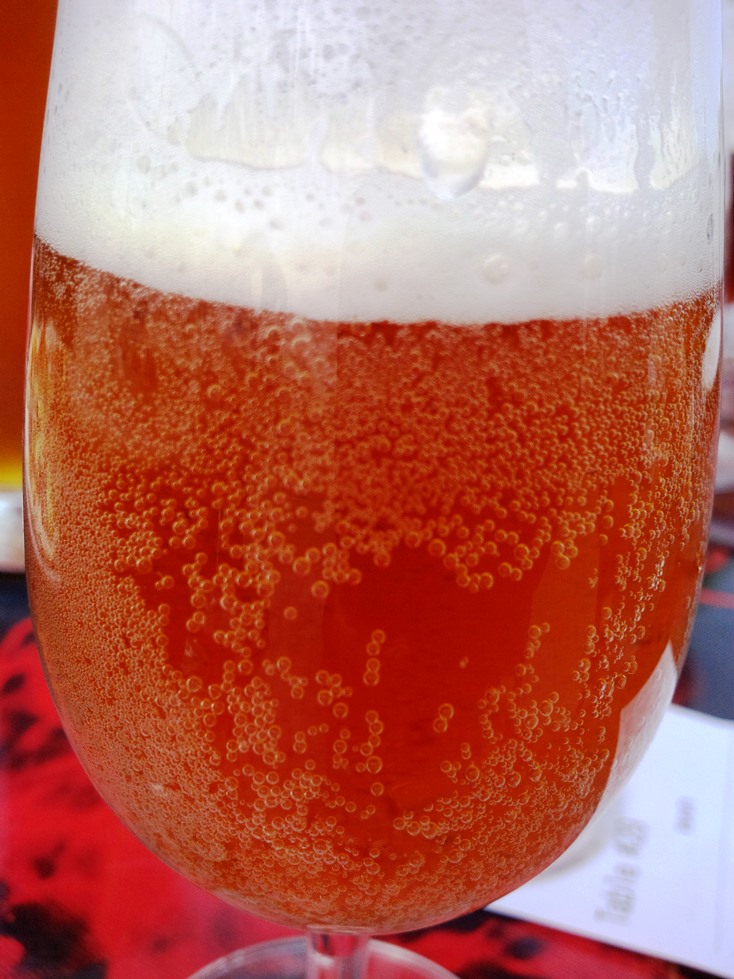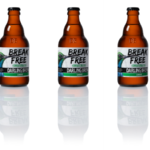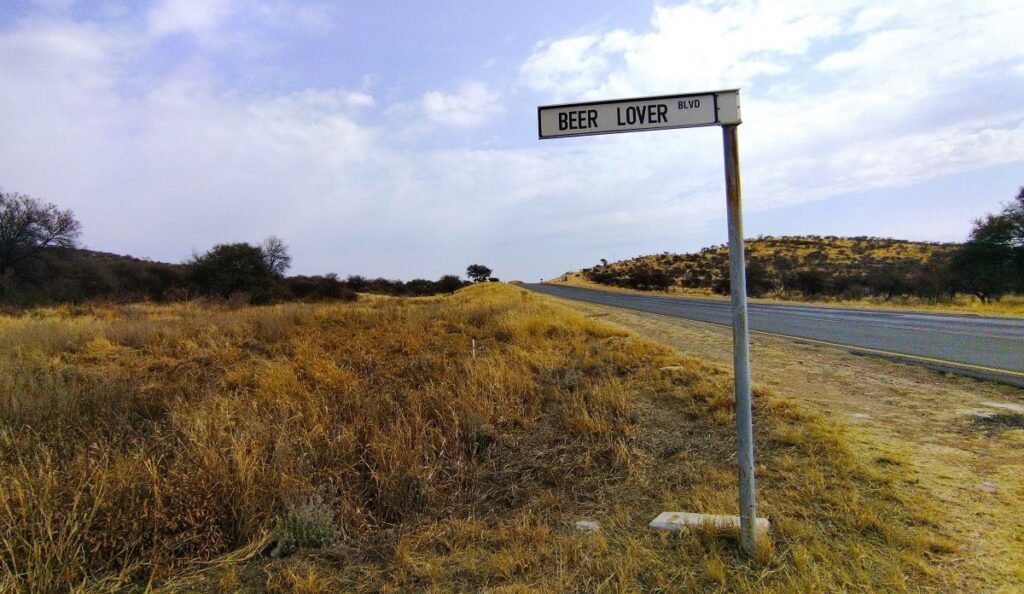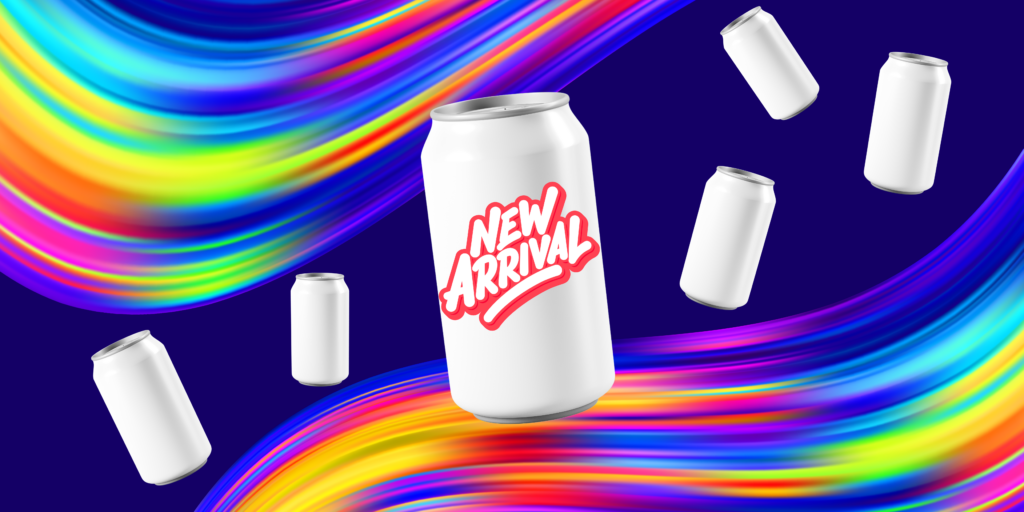
Fok indeed. If you’re ever served a beer that looks like this, please send it back
Imagine the scene. You’re at a restaurant and your much-deserved dinner arrives. You’re about to cut a slither off the perfectly cooked steak in front of you when, what’s this? There is a blob of something that looks like dried-on curry on your plate – something that has no place being near your ribeye and fries. You signal the waiter immediately and demand a replacement meal on a clean plate.
You wouldn’t think twice about sending back a dirty plate in a restaurant and yet people around the world are constantly accepting beer in dirty glasses and sipping away, even though they most likely know that something isn’t quite right.
Recognising a dirty beer glass isn’t quite as simple as spotting a smear of yesterday’s food on a plate. Sure, there are sometimes instantly obvious signs. We’ve probably all experienced the horrible realisation that we were about to sip from a glass wearing someone else’s lipstick, for example. But usually it’s not the glassware that shows signs of dirt and grease – it is the beer within.
How to spot a dirty beer glass
Beer is a delicate beverage and much can go wrong throughout the brewing and fermentation processes. But even when the brewer has done everything right, it can fall at the final hurdle, with a careless bartender that doesn’t understand the difference between clean and ‘beer clean’. The slightest, barely visible morsel of food; the smallest smear of grease; the merest hint of leftover soap – all can ruin a beer instantly and the beer will tell you this on sight, usually through its foam – or lack thereof.

Do not accept a beer glass that looks like this. You deserve better.
Foam – also known as head, or the crown – sets beer apart from other beverages. Theses have been penned on maximising head retention, which while alluring, isn’t just about aesthetics. A fine, mousse-like foam also helps with mouthfeel, giving the impression of a silkier pint. And the head, formed by carbon dioxide bubbles rising to the surface, also brings with it enhanced aroma – a crucial part of the overall tasting experience. But a glass that isn’t beer clean can destroy it all in a matter of seconds.
The appearance of the beer will help determine the issue with the glass. A beer entirely devoid of foam likely signifies lipids – instant killers of beer’s luscious crown. Lipids are found in fats, oils and waxes and could suggest a glass that either hasn’t been properly rinsed and contains soap residue, or a glass that has been washed alongside dirty dishes, resulting in an invisible film of grease coating its interior. Beer is so delicate that even the grease on your lips – from a Chapstick or those fries you just polished off – can be fatal to foam.
The other sure sign of dirty glassware is a wall of bubbles clinging to the inside of the glass. Along with certain proteins found in beer, carbon dioxide is hydrophobic – that is to say it does not like water. It rises to the surface to escape, enveloped by its new-found hydrophobic friends and thus creates the head we love. But sometimes it gets stuck along the way and the CO2 bubbles end up sticking to the side of the glass on often invisible nucleation points. These could be anything from a streak of dried-on water to a crumb of food baked on in a dishwasher. It doesn’t matter what’s causing the bubbles to cling to the inside of your glass – they should never be there and if they’re present in any great number, are good cause for you to return your beer and request a fresh one.
Achieving “beer clean”
Beer lovers tend to pick out their drinking holes based on a range of criteria – selection of beers available, how well maintained the beer lines are, the level of staff knowledge and indeed, the cleanliness of the glassware. But how do you ensure your glasses at home are certified as beer clean?

No, this is not apple juice, wine or cider. This is beer in a glass that’s been washed with dirty dishes
Well the first step is to break the habit of washing them in the dishwasher with your milk-coated cereal bowl, your butter knife and the plate you had those deep fried chicken wings on. It’s a pain, for sure, but to guarantee beer clean glasses, they have to be washed separately – and ideally by hand.
In bars you might see a dedicated glass washing machine or a sink-top Spülboy, an ingenious two-vessel cleaning system that uses minimal water and no electricity. But only the most obsessive (and wealthy) beer lovers invest in one for their home. Instead, opt for the two-sink system – the first filled with warm water and suds-free detergent and a second with cool, clean rinse water that’s getting regularly drained and replaced. After washing the glass with a long-handled brush (one that never gets used for washing pots, pans or plates), rinse the glass and then leave it to dry. Glasses should be dried rim down on a rack that allows for air flow and never dried with a cloth. Flecks of lint? Yes – they cause nucleation points too. Plus smelly old drying rags can make you glass – and therefore your beer – smell like wet dog.
If you think your glassware is beer-grade, try one of these tests. Fill a glass with water and as you pour it out, watch how it empties. Does the water run off in one neat sheet? Then it’s beer clean. But if there are droplets and areas of webbing, you might want to get that glass back into the sink before you fill it with heard-earned beer. A fun way to check your glass-cleaning ability is the salt test. Rinse a glass and leave the inside wet, then sprinkle salt evenly around the interior. If there are patches where the salt won’t adhere, you have yourself an unclean glass; if the salt sticks, your glass is beer clean. Well, it was at least, before you tipped salt into it…
For a beer to make it into your fridge, it has gone through a range of expert processes conducted by expert farmers, maltsters, brewers and more. All you have to do is pour it out and drink it, so don’t mess up your only role with a glass that isn’t up to the job. And don’t let a bar or restaurant get away with it either. They might not even know there’s anything wrong with a glass that looks like the ones in these photos, so bookmark this post and whip it out in times of need. Together we can make the world a better place. And I’m pretty sure that starts with making sure the glass you drink from is clean enough to pour a beer into.
This article was first published on the BLEFA blog.
Want to read more on this? Check out How to tell a bar loves your beer as much as you do.










0 Comments